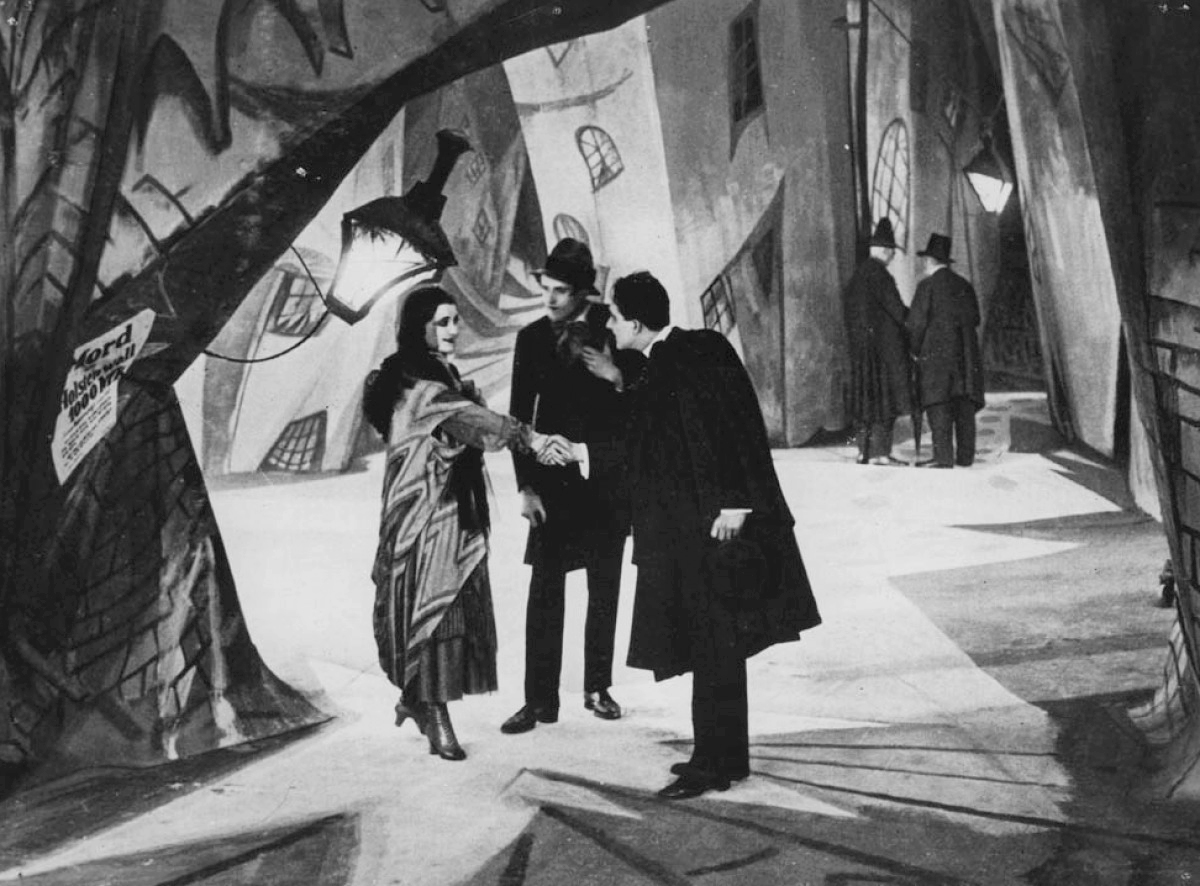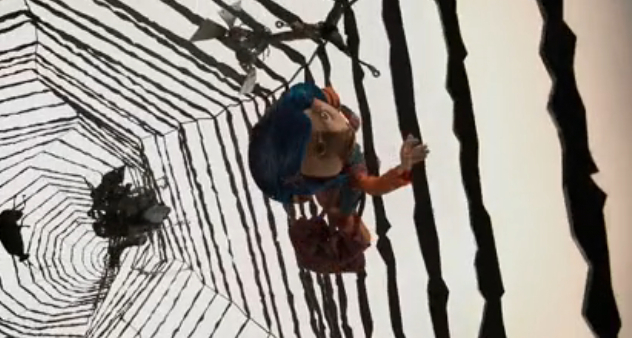German Expressionism
German expressionism is a film movement that lasted from 1919-1931, and ended with Hitler's rise to power. Expressionism also had a broader influence and was present in German paintings, sculpture, music etc. at the time.
The Cabinet of Dr. Caligari, an expressionist film
Unlike impressionism, which was concerned with the surface reality, expressionist works were 'warped' by human perception and emotion. This was achieved through stylized set design and shadowy lighting. Stylized set design was achieved through the use of artificial geometries, resulting in distorted and exaggerated buildings and landscapes, elaborate costuming and unnatural makeup. The cinematography emphasized bold contrasts (dark shadows and bold highlights). Oblique angles and non-parallel lines were also characteristics of expressionism.
Common themes in expressionist films were madness, criminality and the fracturing of identity, where the characters inner turmoil was reflected in the strangeness of their environments.
This movement influenced other film genres such as film noir, due to expressionists fleeing Nazi Germany and plying their trade in Hollywood.
Many film directors were influenced by German expressionism, including Henry Selick.
Selick's work includes The Nightmare Before Christmas and Coraline, both of which has incorporated some expressionist elements.

The Nightmare Before Christmas (although concieved and produced by Tim Burton), was directed by Henry Selick and incorporates expressionist elements such as distorted and impossible landscapes.

Coraline exhibits some expressionist elements as well, largely in the impossible geometries. This is used to contrast the initially ideal (later sinister) "other" world with the more mundane (realistic) one in the movie.
No comments:
Post a Comment